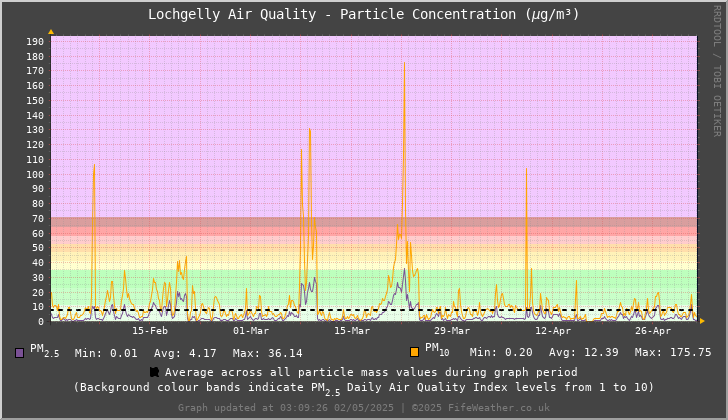The FifeWeather.co.uk air quality monitor measures the concentration of microscopic particles in the air. These particles are released into the atmosphere from different sources such as road transport (which produces particles when fuels are burned) or the burning of fuels for industrial, commercial and domestic purposes. The size of these particles can vary from a few nanometres in diameter (about the size of a virus) to around 100 micrometres (about the thickness of a human hair).
Measurements of the concentration of particulate matter in air are made by recording the mass of particulate matter in one cubic metre of air, using the units micrograms per cubic metre (µg/m3).
Particulate matter is classified according to its size and this classification is used in the below concentration measurements. PM10 is the concentration of particles that are less than or equal to 10µm in diameter. Similarly PM2.5 describes the concentration of particles that are less than or equal to 2.5 µm in diameter.
Studies have revealed that PM10 (or smaller) particulates can have serious short and long term health impacts. A 2013 European study concluded there are no "safe" levels of particulates and that for every increase of 10 μg/m3 in PM10, the lung cancer rate rose 22%. Smaller PM2.5 particles were found to be the most harmful, as they can penetrate deep into the lungs.
PM10 and PM2.5 are the primary particulate size classifications used to calculate the UK Air Quality Index. In the below graphs and gauges, the background colours indicates the UK Air Quality Index according to the following table:
| Index | Band | Health Message | |
| General Population | Individuals At Risk | ||
| 1 | Low | Enjoy your usual outdoor activities. | Enjoy your usual outdoor activities. |
| 2 | |||
| 3 | |||
| 4 | Moderate | Enjoy your usual outdoor activities. | Adults and children with lung problems, and adults with heart problems, who experience symptoms, should consider reducing strenuous physical activity, particularly outdoors. |
| 5 | |||
| 6 | |||
| 7 | High | Anyone experiencing discomfort such as sore eyes, cough or sore throat should consider reducing activity, particularly outdoors. | Adults and children with lung problems, and adults with heart problems, should reduce strenuous physical exertion, particularly outdoors, and particularly if they experience symptoms. People with asthma may find they need to use their reliever inhaler more often. Older people should also reduce physical exertion. |
| 8 | |||
| 9 | |||
| 10 | Very High | Reduce physical exertion, particularly outdoors, especially if you experience symptoms such as cough or sore throat. | Adults and children with lung problems, adults with heart problems, and older people, should avoid strenuous physical activity. People with asthma may find they need to use their reliever inhaler more often. |
Air Quality Index / Particle Mass Concentration
Last Updated: N/A
PM2.5
PM10
Last 24 Hours
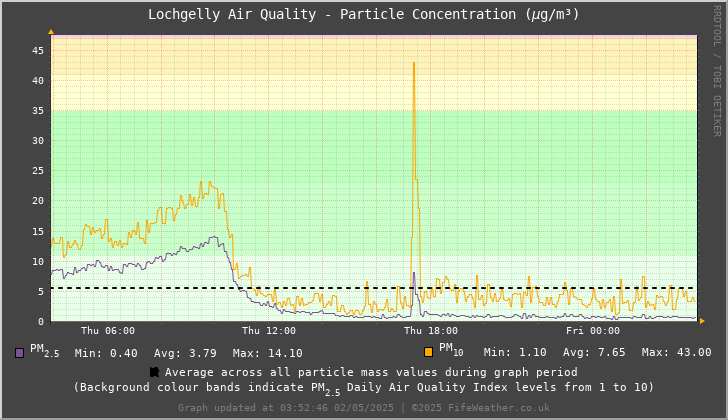
Last 48 Hours
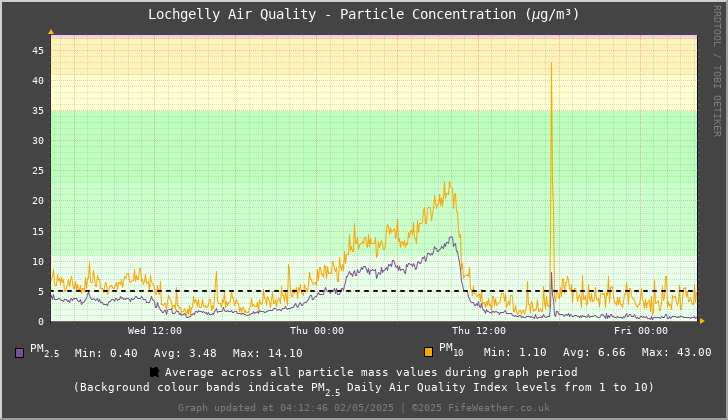
Last 7 Days
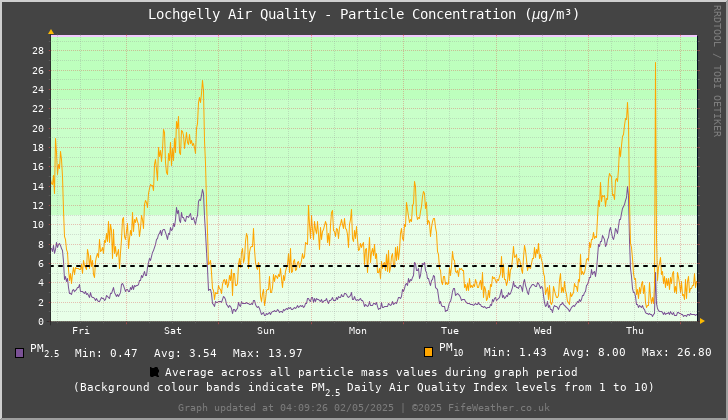
Last 30 Days
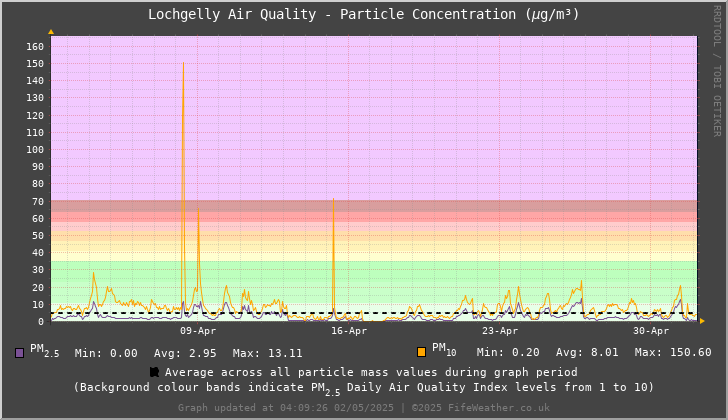
Last 90 Days
